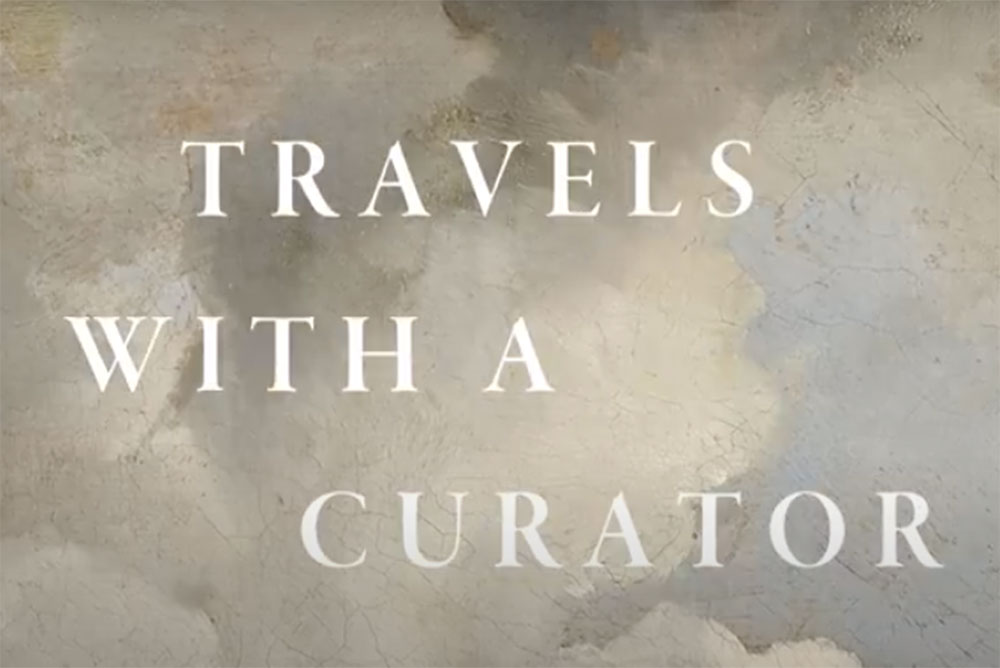
THINK OF IT as the trip you didn’t get to take this year. But this is about as far away from “if it’s Tuesday this must be Belgium” as one can get.
Twenty times since the spring, the Frick Collection curators who have toasted us with Cocktails With a Curator have invited us to “travel” along with them as they revisit places they enjoyed before the Covid lockdown (the Frick will reopen early next year). The 20 places they chose have a connection to an artwork in the museum’s collection, or to the museum’s founders, Henry Clay Frick and his daughter Helen Clay Frick (who helped to found the museum and amassed her own art collection).
The following images are screen grabs taken from various episodes of the Frick Collection’s Travels With a Curator.
—Nancy McKeon
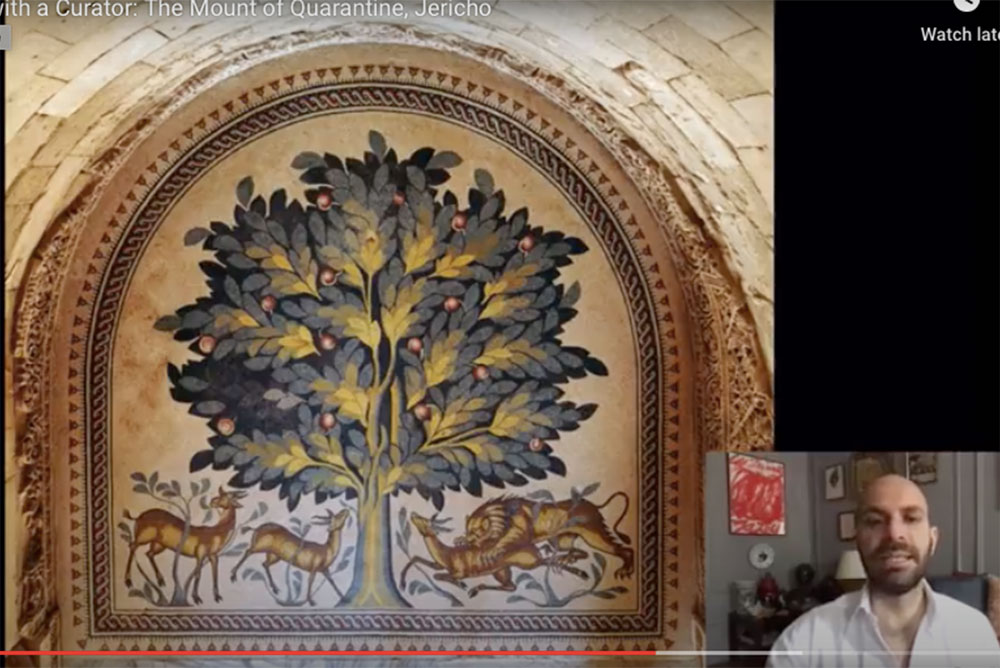
Early in the Travels series, Chief Curator Xavier Salomon (inset, above) visits the city of Jericho, in the Jordan Valley not far from the Dead Sea. One of the treasures of Jericho is Hisham’s Palace, home to the caliph of the area in the early days of Islam. In addition to spirited architectural decoration, the eighth-century palace has the “Tree of Life” mosaic (above) in the bathhouse of the complex. But in no way is the structure the oldest thing in Jericho, which is widely thought to be the oldest continuously inhabited settlement in the world.
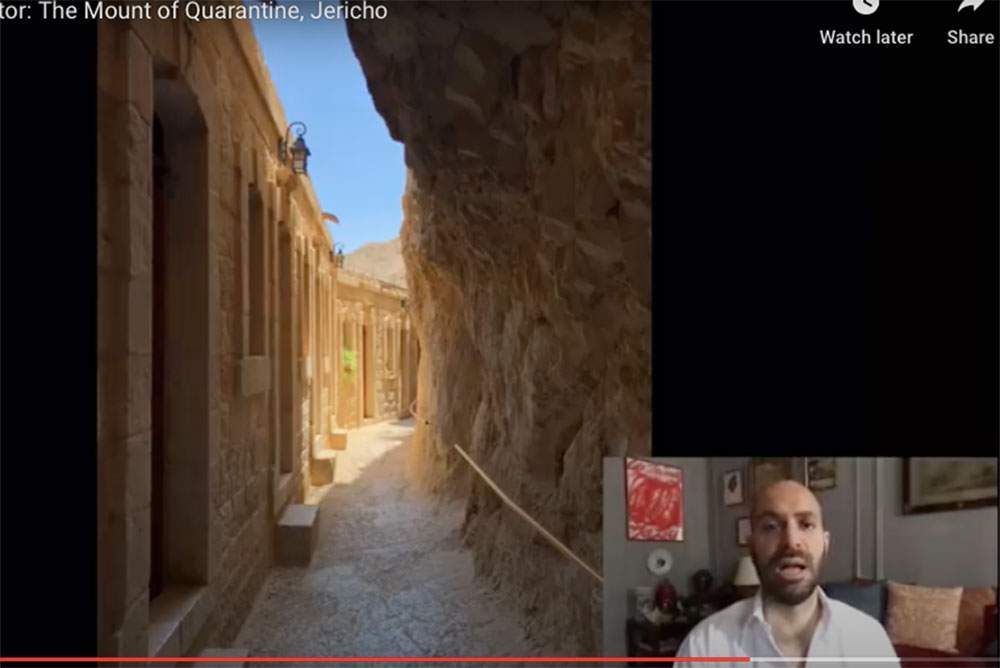
The “oldest” credit doesn’t even belong to the sixth-century monastery, built by the Byzantines and now owned and managed by the Greek Orthodox Church of Jerusalem. The Monastery of the Temptation follows the contours of the hill itself, the Mount of Temptation (also known as the Mount of Quarantine), and encloses the very rock on which Jesus is said to have stood to repel the Devil, who offered him all the kingdoms of the world if he would follow Satan.
This is the rocky desert area where Jesus “fasted for 40 days and 40 nights,” leading to the Christian practice of a 40-day Lenten period. Salomon points out two connections to the Travels project. First, it’s one of very few places that still exist as they appear in a Frick masterpiece: “The Temptation of Christ” by Duccio di Buoninsegna (although the Judaean hills in the painting look more like the Sienese hills known to the painter!).
Jesus’s fast has significance beyond that, the Italian-born Salomon points out: Forty, in Italian, is quaranta, and the 40-day period a quarantina. That, of course, is the source of the English word quarantine, which is pretty much what we did in the early days of the current pandemic.
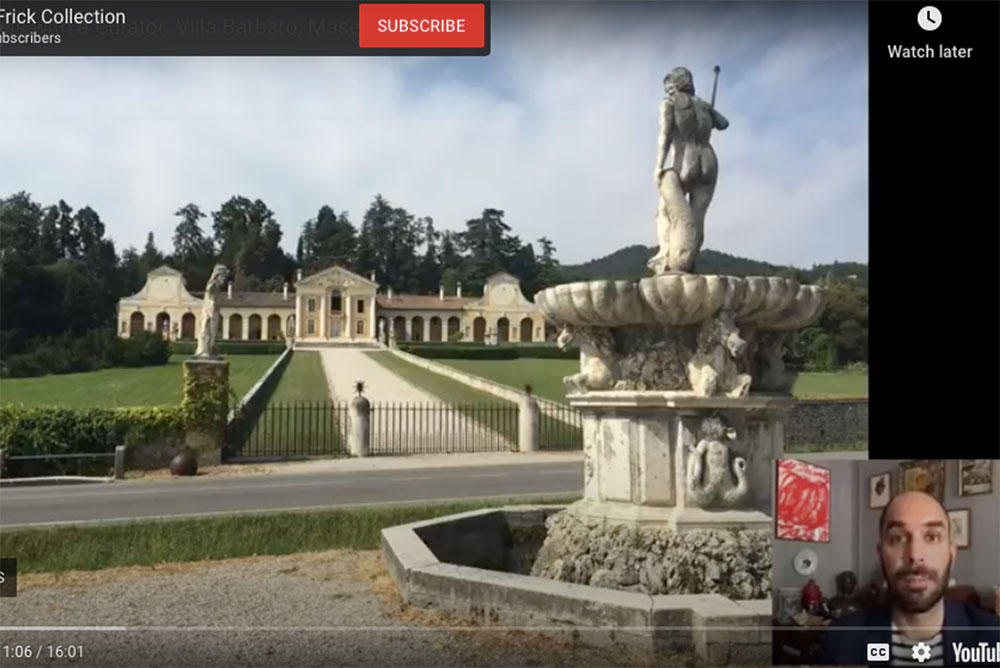
The Frick contains two large works by Italian painter Paolo Veronese, but they pale before the 16th-century villa that Veronese “decorated” for the Barbaro family in the Venetian countryside, the Villa Barbaro (or Villa di Maser, for the location) being one of the spectacular structures designed by Andrea Palladio that dot the Veneto region.
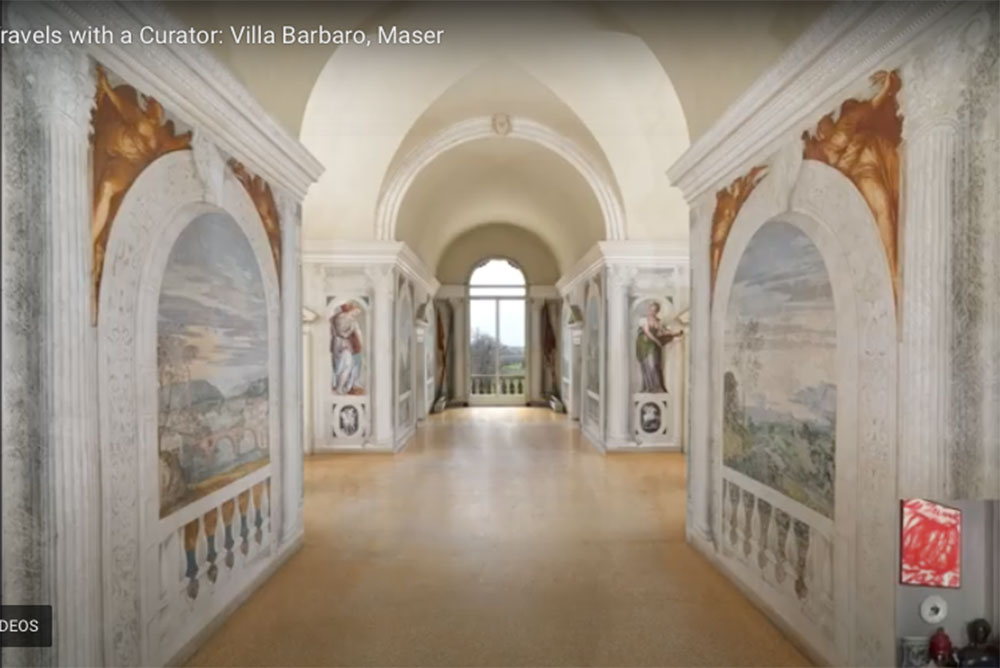
Veronese’s work inside the villa combine trompe l’oeil, with faux vistas and statuary, and homely references to household pets and the children of the Barbaro family.
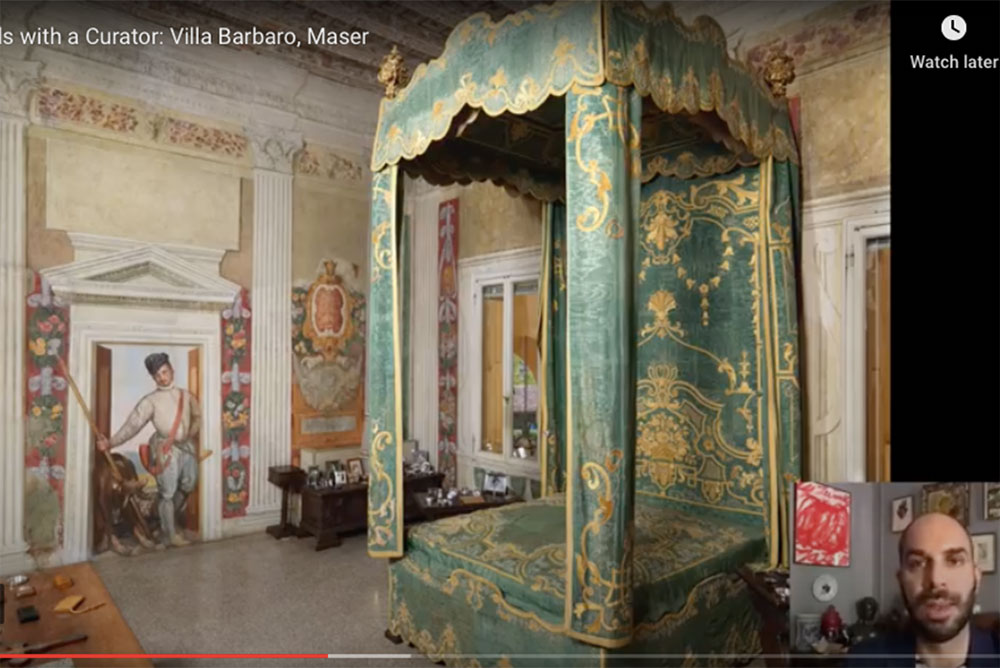
What charms Solomon is that, while the villa is open to the public, it is very much still a “living” thing, inhabited and preserved by the Volpi family since 1934. Shown above is a bedroom (obviously).
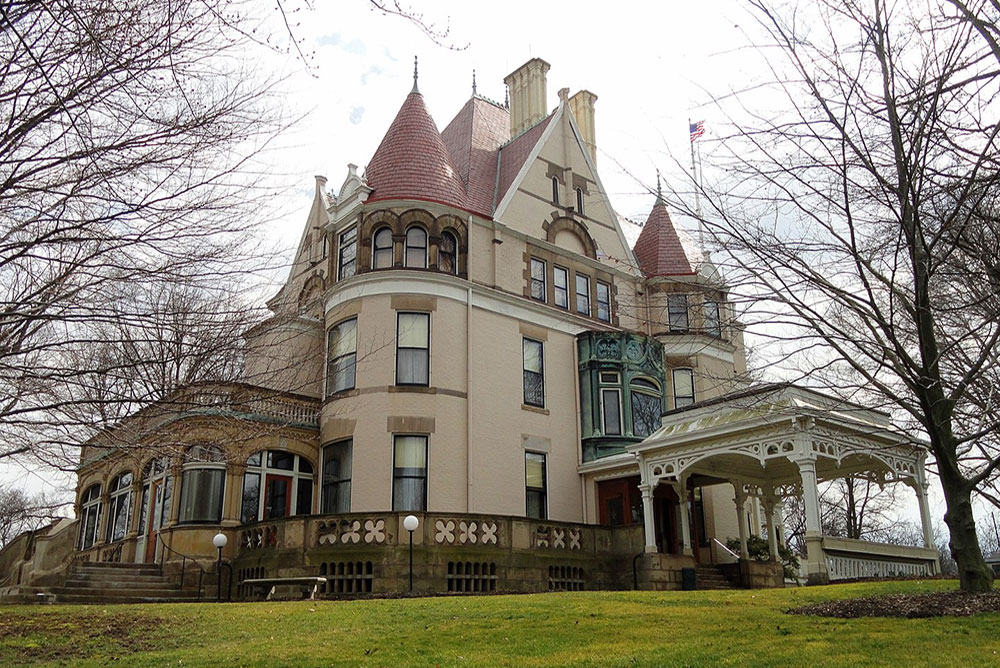
The 20th and last stop of the Travels itinerary is the Frick home in Pittsburgh, where the Frick family lived before and even while living in New York, at 1 East 70th Street,.
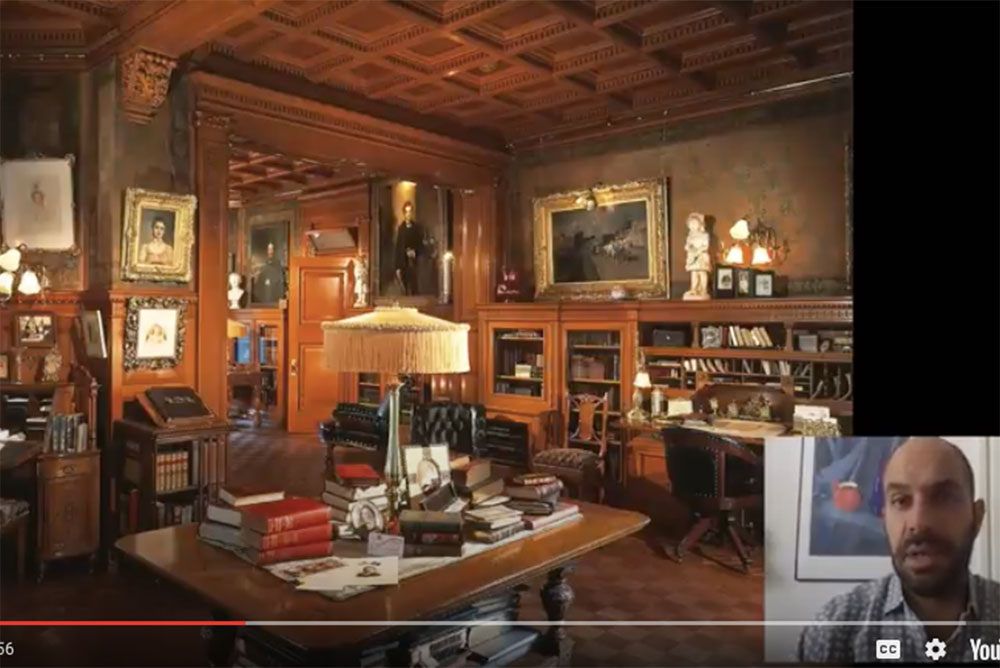
As curator Salomon explains, when the Frick home in New York was being turned into a museum, in 1935, all of the Frick family’s personal belongings were shipped back to Clayton, the Pittsburgh home, where daughter Helen Clay Frick continued to live (and collect art) and which is today also open to the public, part of several Frick-family-affiliated galleries and museums in their hometown. Shown above is Henry Clay Frick’s library.
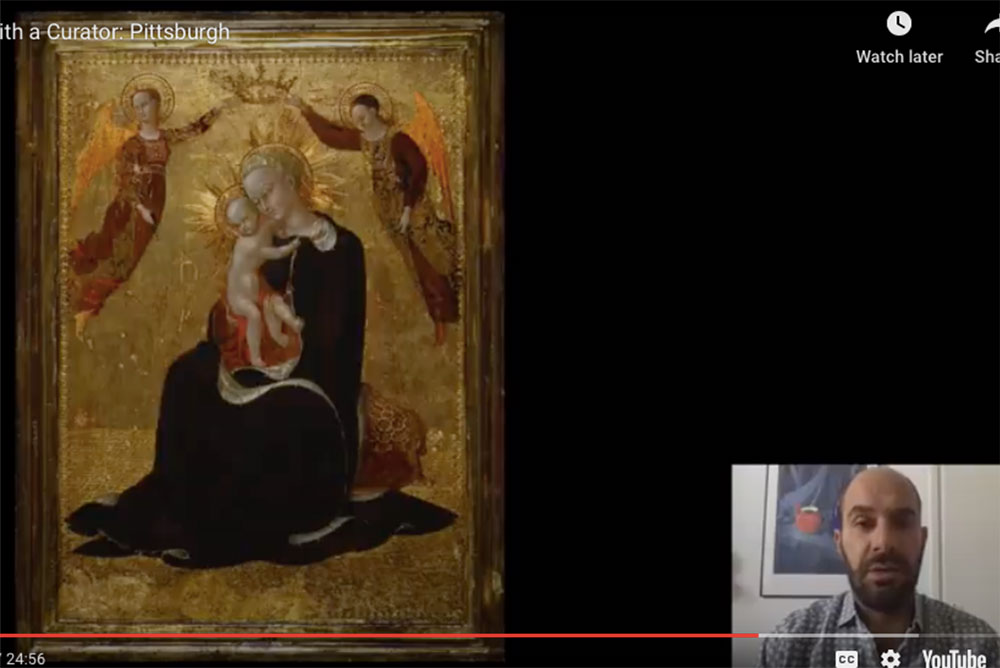
Helen Clay Frick had an aesthetic that led her away from her father’s preference for old master paintings (though she certainly prized them as well). She amassed an impressive collection of “gold ground” paintings, 13th- and 14th-century works of tempera on wood panels whose background had an icon-worthy glow from gold leaf, as seen in the “Virgin and Child” by Sassetta, above. Salomon points out that Helen Clay collected more than the expected Duccios and Cimabues; she also purchased unusual works by lesser-known artists that make her collection deep and varied. Her passion for gold grounds was responsible for those now in the Frick Collection in New York, but the bulk of her holdings are at the Frick Pittsburgh, certainly closer than Jericho and worth a road trip.
Among other stops on the Travels With a Curator tour are Honolulu, Hawaii; Grasse, France; Dresden, Germany; Bruges, Belgium. And more—13 more.
